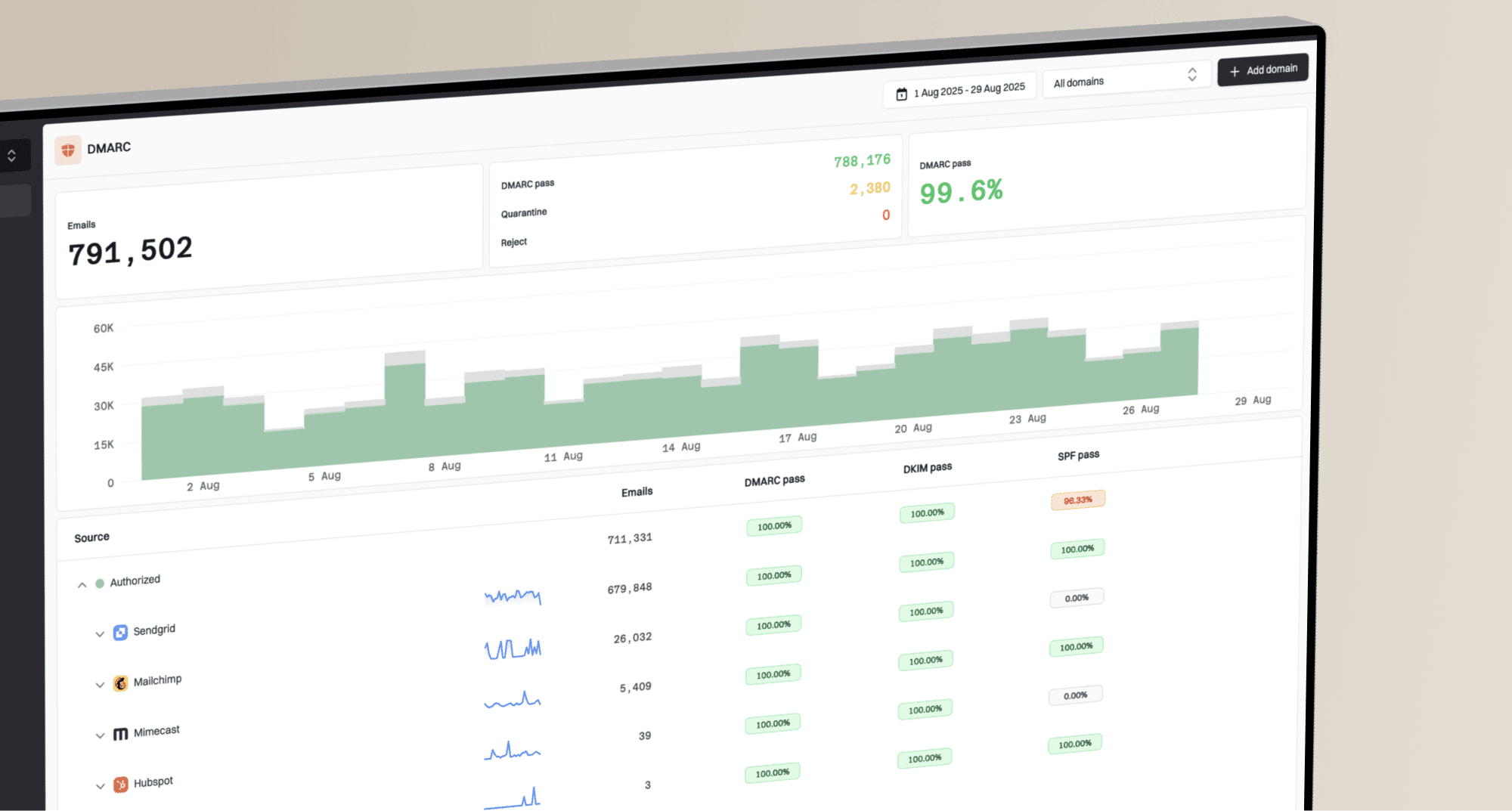nsZones Spam Source Block List (SBL)


 Spamhaus
Spamhaus 0Spam
0Spam Cisco
Cisco NoSolicitado
NoSolicitado URIBL
URIBL abuse.ro
abuse.ro ALPHANET
ALPHANET Anonmails
Anonmails Ascams
Ascams BLOCKEDSERVERS
BLOCKEDSERVERS Calivent Networks
Calivent Networks EFnet
EFnet
 JustSpam
JustSpam Kempt.net
Kempt.net
 NordSpam
NordSpam RV-SOFT Technology
RV-SOFT Technology
 Scientific Spam
Scientific Spam Spamikaze
Spamikaze SpamRATS
SpamRATS SPFBL
SPFBL Suomispam
Suomispam System 5 Hosting
System 5 Hosting Team Cymru
Team Cymru Validity
Validity www.blocklist.de Fail2Ban-Reporting Service
www.blocklist.de Fail2Ban-Reporting Service ZapBL
ZapBL 2stepback.dk
2stepback.dk Fayntic Services
Fayntic Services ORB UK
ORB UK technoirc.org
technoirc.org TechTheft
TechTheft Spamhaus
Spamhaus 0Spam
0Spam Cisco
Cisco NoSolicitado
NoSolicitado URIBL
URIBL abuse.ro
abuse.ro ALPHANET
ALPHANET Anonmails
Anonmails Ascams
Ascams BLOCKEDSERVERS
BLOCKEDSERVERS Calivent Networks
Calivent Networks EFnet
EFnet
 JustSpam
JustSpam Kempt.net
Kempt.net
 NordSpam
NordSpam RV-SOFT Technology
RV-SOFT Technology
 Scientific Spam
Scientific Spam Spamikaze
Spamikaze SpamRATS
SpamRATS SPFBL
SPFBL Suomispam
Suomispam System 5 Hosting
System 5 Hosting Team Cymru
Team Cymru Validity
Validity www.blocklist.de Fail2Ban-Reporting Service
www.blocklist.de Fail2Ban-Reporting Service ZapBL
ZapBL 2stepback.dk
2stepback.dk Fayntic Services
Fayntic Services ORB UK
ORB UK technoirc.org
technoirc.org TechTheft
TechTheft Spamhaus
Spamhaus 0Spam
0Spam Cisco
Cisco NoSolicitado
NoSolicitado URIBL
URIBL abuse.ro
abuse.ro ALPHANET
ALPHANET Anonmails
Anonmails Ascams
Ascams BLOCKEDSERVERS
BLOCKEDSERVERS Calivent Networks
Calivent Networks EFnet
EFnet
 JustSpam
JustSpam Kempt.net
Kempt.net
 NordSpam
NordSpam RV-SOFT Technology
RV-SOFT Technology
 Scientific Spam
Scientific Spam Spamikaze
Spamikaze SpamRATS
SpamRATS SPFBL
SPFBL Suomispam
Suomispam System 5 Hosting
System 5 Hosting Team Cymru
Team Cymru Validity
Validity www.blocklist.de Fail2Ban-Reporting Service
www.blocklist.de Fail2Ban-Reporting Service ZapBL
ZapBL 2stepback.dk
2stepback.dk Fayntic Services
Fayntic Services ORB UK
ORB UK technoirc.org
technoirc.org TechTheft
TechTheft Spamhaus
Spamhaus 0Spam
0Spam Cisco
Cisco NoSolicitado
NoSolicitado URIBL
URIBL abuse.ro
abuse.ro ALPHANET
ALPHANET Anonmails
Anonmails Ascams
Ascams BLOCKEDSERVERS
BLOCKEDSERVERS Calivent Networks
Calivent Networks EFnet
EFnet
 JustSpam
JustSpam Kempt.net
Kempt.net
 NordSpam
NordSpam RV-SOFT Technology
RV-SOFT Technology
 Scientific Spam
Scientific Spam Spamikaze
Spamikaze SpamRATS
SpamRATS SPFBL
SPFBL Suomispam
Suomispam System 5 Hosting
System 5 Hosting Team Cymru
Team Cymru Validity
Validity www.blocklist.de Fail2Ban-Reporting Service
www.blocklist.de Fail2Ban-Reporting Service ZapBL
ZapBL 2stepback.dk
2stepback.dk Fayntic Services
Fayntic Services ORB UK
ORB UK technoirc.org
technoirc.org TechTheft
TechTheft Spamhaus
Spamhaus 0Spam
0Spam Cisco
Cisco NoSolicitado
NoSolicitado URIBL
URIBL abuse.ro
abuse.ro ALPHANET
ALPHANET Anonmails
Anonmails Ascams
Ascams BLOCKEDSERVERS
BLOCKEDSERVERS Calivent Networks
Calivent Networks EFnet
EFnet
 JustSpam
JustSpam Kempt.net
Kempt.net
 NordSpam
NordSpam RV-SOFT Technology
RV-SOFT Technology
 Scientific Spam
Scientific Spam Spamikaze
Spamikaze SpamRATS
SpamRATS SPFBL
SPFBL Suomispam
Suomispam System 5 Hosting
System 5 Hosting Team Cymru
Team Cymru Validity
Validity www.blocklist.de Fail2Ban-Reporting Service
www.blocklist.de Fail2Ban-Reporting Service ZapBL
ZapBL 2stepback.dk
2stepback.dk Fayntic Services
Fayntic Services ORB UK
ORB UK technoirc.org
technoirc.org TechTheft
TechTheftThe nsZones Spam Source Block List (SBL) is a realtime blacklist that identifies IP addresses associated with spam. It is a type of DNSBL (DNS Blocklist) that lists hosts involved in sending unsolicited email. Specifically, it includes open relay hosts, spammers' hosts, open proxies, and spam engines. All hosts on this blacklist are re-evaluated periodically, approximately every 12 months, and are automatically removed if they are no longer considered a threat.
The policy for this blocklist is to add IPs that are observed engaging in specific activities. The addresses are gathered from several sources, including:
Technically, mail servers can query this blacklist by sending a DNS query. To check if an IP address like 1.2.3.4 is listed, a server would query the reverse IP at sbl.nszones.com (for example, 4.3.2.1.sbl.nszones.com). A return address of 127.0.0.2 indicates the IP is listed as an open relay, a hijacked PC, or a spam source. It is important to note that this specific blacklist does not include IPs from dynamic or no-PTR networks, as those are handled by a separate nsZones list.
The nsZones Spam Source Block List (SBL) is operated by the organization nsZones. They provide DNSBL services to help mail server administrators filter out unwanted email from known spam sources. nsZones maintains that blocklists (or blacklists) are a defensive tool, used by receiving mail servers to reject or filter mail based on the sender's IP address. It is a system that allows receivers to protect themselves and cannot be used to actively attack a sender.
In addition to the SBL, nsZones runs other lists, including dyn.nszones.com for dynamic networks and ubl.nszones.com for domain names. They also offer a combined zone, bl.nszones.com, which incorporates both the SBL and DYN lists. The organization also supports the community by allowing anyone to host a public mirror of their DNSBL services to help improve availability and performance.
Before requesting removal from any blocklist, you should first identify and resolve the underlying issue that caused the listing. This could involve securing a compromised PC, closing an open relay, or addressing problematic sending practices. If you fail to fix the root cause, your IP will likely be listed again.
nsZones provides a lookup and removal form on their website. There are two paths to delisting:
The impact of being listed on the nsZones SBL is generally considered low. While being on any blocklist can negatively affect your email deliverability, the severity depends on how many major mail providers and businesses actually use the list to filter incoming email. Your emails may be rejected or sent to the spam folder by servers that use this specific blacklist. However, because it is not one of the most widely used blocklists, the overall impact on your email program might be minimal compared to a listing on a more prominent blacklist.
